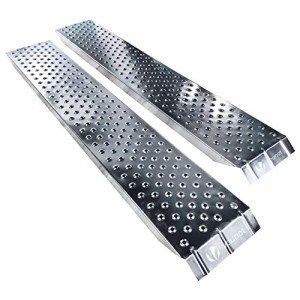The 9 Things Your Parents Taught You About Wheelchair Loading Ramps

The Importance of Wheelchair Loading Ramps: Enhancing Accessibility for All
In today’s world, availability is more crucial than ever. People with mobility challenges deserve the same opportunities as anyone else, and ensuring they can browse their environments securely is crucial. Wheelchair loading ramps play an essential role in this regard. They not just assist individuals in utilizing wheelchairs but also make environments accessible for those with strollers, carts, and other wheeled devices. In this article, we will check out the significance of wheelchair loading ramps, their numerous types, and essential features to consider when picking one for your needs.
Understanding Wheelchair Loading Ramps
Wheelchair loading ramps are inclined surface areas created to facilitate the motion of people in wheelchairs from one elevation to another, such as from a pathway to a building entrance or from a vehicle to the ground. These ramps lessen the effort needed to navigate obstacles, aiming to produce a more inclusive environment.
Common Settings for Wheelchair Ramps
Wheelchair ramps can be found in different settings, consisting of:
| Setting | Description |
|---|---|
| Residential | Set up at homes to supply access to front decks, garages, or backyards for relative. |
| Commercial | Found in businesses, stores, and public structures to adhere to accessibility laws. |
| Public Spaces | Found in parks, outside locations, and public transportation facilities to guarantee mobility equality. |
| Automobiles | Used for loading and dumping wheelchairs from vehicles, vans, and trucks. |
Types of Wheelchair Loading Ramps
Selecting the right kind of ramp depends upon the particular needs of the user and the environment in which it will be used. Here are the main types of wheelchair loading ramps:
1. Temporary Ramps
Temporary ramps are lightweight and portable. They are ideal for short-term use, such as during events or when accommodating visitors.
-
Pros:
- Easy to transport.
- Quick setup without setup.
-
Cons:
- May absence sturdiness.
- Not suitable for long-term usage.
2. Irreversible Ramps
These ramps are developed into the structure of structures or homes, offering a more robust and lasting option.
-
Pros:
- Customizable to fit specific requirements.
- Long lasting and stable for comprehensive usage.
-
Cons:
- Higher upfront expense.
- Irreversible installation may need authorizations.
3. Folding Ramps
Folding ramps can broaden and contract, making them versatile for various scenarios, specifically for carrying in cars.
-
Pros:
- Compact when stored.
- Appropriate for diverse applications.
-
Cons:
- Slightly much heavier than other portable ramps.
- May need assistance for setup.
4. Telescoping Ramps
Telescoping ramps adjust in length, offering versatility for different height elevations and accommodating different kinds of automobiles.
-
Pros:
- Adjustable length for adjustable height requirements.
- Great for irregular surface areas.
-
Cons:
- Can be costlier than fixed ramps.
- May need maintenance to make sure functionality.
5. Wheelchair Van Ramps
These ramps are particularly developed for wheelchair-accessible vans and offer a safe and smooth shift from the automobile to the ground.
-
Pros:
- Designed for vehicle-specific usage.
- Typically includes powered alternatives for easy loading.
-
Cons:
- May just be usable in a lorry setting.
- Requires correct installation.
Important Features to Look for in Wheelchair Loading Ramps
When selecting a wheelchair loading ramp, several elements should be considered to make sure safety and use:
| Feature | Value |
|---|---|
| Product | Pick long lasting materials like aluminum or steel for much better longevity and security. |
| Weight Capacity | Ensure the ramp can support the weight of the user and wheelchair, typically marked in requirements. |
| Slope Ratio | A slope of 1:12 is advised for manual wheelchairs, while powered wheelchairs might have the ability to handle steeper slopes. |
| Surface Texture | Try to find ramps with slip-resistant surface areas to prevent accidents, specifically in wet conditions. |
| Mobility | Consider how quickly the ramp can be moved or stored, depending upon its designated usage. |
| Security Features | Handrails and side curbs can boost safety by preventing slips and falls. |
Frequently Asked Questions (FAQs)
1. How high should a wheelchair ramp be?
The advised slope for a wheelchair ramp is usually 1:12, suggesting that for every inch of height, there ought to be at least 12 inches of ramp length. Steeper ramps might be risky for manual wheelchairs and might lead to accidents.
2. Can I develop my own wheelchair ramp?
Yes, you can build your own ramp following regional structure codes and guidelines. However, it is important to ensure it satisfies security standards and offers adequate support for its desired users.
3. What kind of wheelchair ramp is best for a car?
For cars, telescoping ramps or folding ramps are typically best due to their mobility and adjustable lengths. Ensure they are developed for the height of your automobile for optimal security.
4. Do I need a permit to install a long-term ramp?
Generally, yes, most towns require a permit for installing a long-term ramp, especially for public structures or industrial properties. Make certain to examine regional guidelines before installation.
5. Are there monetary assistance programs for wheelchair ramps?
Numerous organizations provide monetary aid for home adjustments, consisting of wheelchair ramps. Consult regional disability advocacy groups or governmental firms for available grants or financing.
Wheelchair loading ramps are vital tools that considerably enhance availability for individuals with mobility obstacles. By understanding the various kinds of ramps, their necessary functions, and how to pick the best one, people and services can contribute to a more inclusive society. As the world continues to advance towards much better availability standards, buying quality wheelchair loading ramps is a financial investment in equity and self-respect for everybody.

